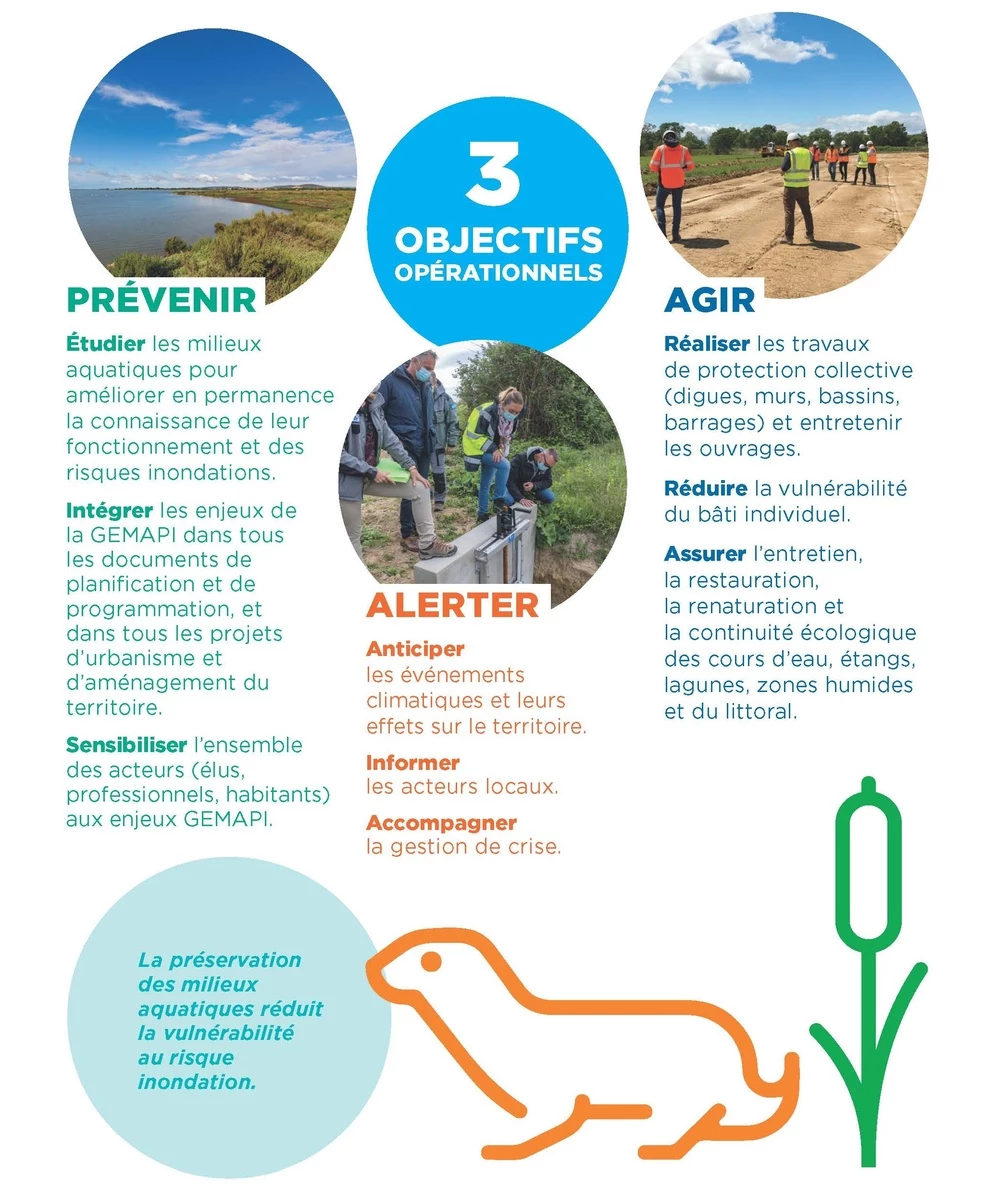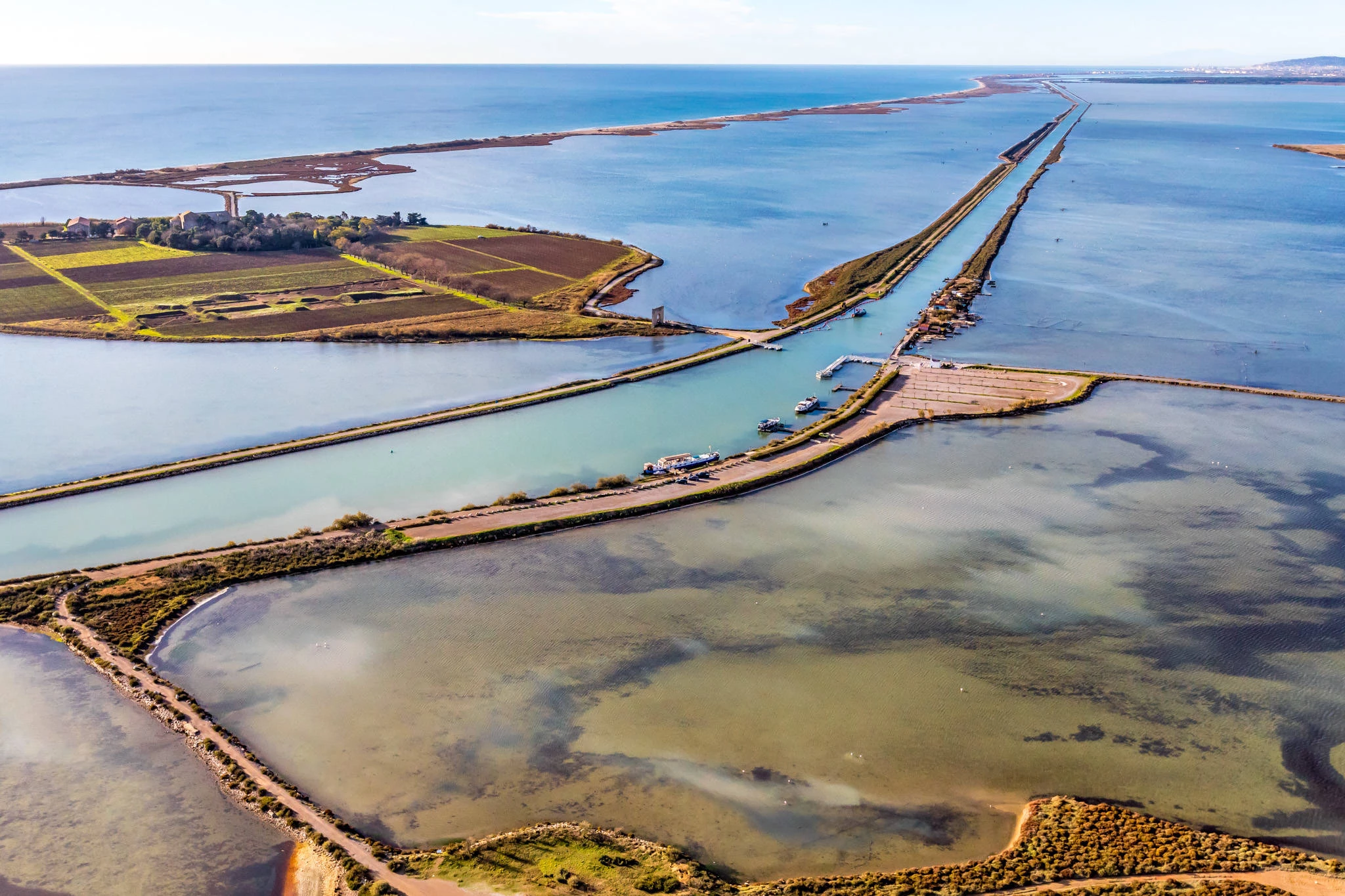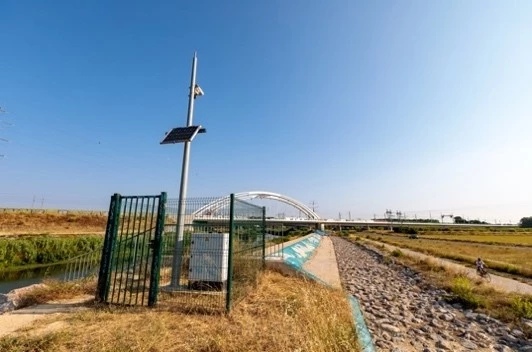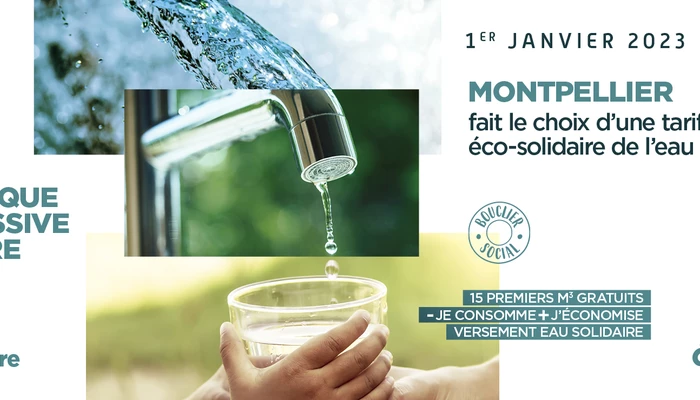3 operational objectives: prevent, act, alert

GEMAPI enables 2 complementary missions to be carried out in synergy:
- maintenance of watercourses, preservation of wetlands and lagoons, protection of the coastline;
- construction of protective structures, monitoring of watercourse levels, crisis management.
For example, restoring nature to its rightful place along watercourses and limiting the artificialization of land help to mitigate flood risk by allowing water to return to a more natural flow.
Through these 3 operational objectives, it is now possible to take a systemic approach to the challenges posed by climate disruption, and to propose appropriate, efficient solutions for both the preservation of aquatic environments and the safety of local residents.
GEMAPI at the service of the territory
While the objectives are ambitious, the concrete actions are equally so, and require a range of skills: drawing up strategies, day-to-day interventions on the territory...
What scope?
GEMAPI means a wide scope of intervention:
- 290 km of main rivers, the Lez and the Mosson.
- 1,800 ha of lagoons and wetlands
- 10 km of coastline at Villeneuve-lès-Maguelone
- 25 km of dikes and 10 classified structures
- 18 flood control basins
- 22 monitoring sensors
Who finances?
All the actions undertaken are notably financed by the taxe GEMAPI, levied on local taxes. This can only be used to act on aquatic environments and the flood risk. In this way, local residents contribute to the resilience of their territory.
Focus on the Mediterranean coast

The coastline of our territory is a precious asset but a fragile environment: it is subject to the risks of pollution, flooding, coastal erosion and marine submersion. Coherent, concerted management of its challenges is therefore essential, facilitated by the GEMAPI.
Thus, the Metropole is acting alongside the Conservatoire du Littoral on the protected natural areas of Etang de Vic, Salines de Villeneuve and Etang du Méjean, in conjunction with coastal communes and local managers and players.
Objective: to help coastal areas adapt to climate change.
Flood prevention action programs
Programmes d'Actions de Prévention des Inondations (PAPI - Flood Prevention Action Programs) enable the implementation of a comprehensive flood risk management policy, on the scale of the territory concerned.
In the Lez watershed, a first PAPI (2007-2014) helped to bring safety to more than 18,000 people in the communes of Lattes, Pérols and Villeneuve-lès-Maguelone, secure the CHU and protect the lower Mosson valley.
A 2nd PAPI (2015-2020) has been drawn up to protect areas hard hit by the 2014 floods: construction of a new dike at Juvignac, construction of a dam and retention basin at Grabels, reconstruction of the dikes at Fabrègues, these are the large-scale projects (nearly €10m) currently underway, co-financed by the Region, the State and Europe.
The study, design and regulatory procedure phases are being finalized, and the first works should begin this year.
A 3rd PAPI came into being in March 2022. It will strengthen monitoring and warning tools in the watershed, as well as knowledge of the risk (flooding and runoff) on the tributaries of the main rivers.
On the Etang de l'Or watershed, a PAPI (2019-2024) has been adopted, notably to protect the cabanes de Pérols.
These action programs are contractualized between the State and local authorities, and implemented by study and animation structures:
The aim is to focus these PAPIs on preserving aquatic environments:
- manage the hazard by taking into account the natural functioning of aquatic environments, through an integrated approach;
- develop the search for synergies between hazard management and environmental restoration, such as the restoration of ecological and hydraulic continuities or the creation of flood expansion zones or wetlands;
- restore watercourses in urban crossings.
What is a watershed?
It's a territory where all the water flows and converges towards the same watercourse and then into the sea.
Focus on the "Ville en Alerte" tool

The Metropole is setting up an innovative real-time hydrological risk monitoring and management system, to best assist crisis management on an inter-municipal scale, in close collaboration with all local players.
Called "Ville en Alerte", this collaborative tool includes weather forecasting, monitoring of phenomena by sensors, anticipated simulation of the event and its consequences, real-time management of water regulation basins, triggering of safety measures and, finally, dissemination of the alert to the public.
It thus provides municipalities and government services, in real time, with the information essential to crisis management: areas affected, roads closed, reception centers, etc.
This Ville en Alerte system will also eventually integrate other risks (fires, snow episodes, transport of hazardous materials, etc.) than flood risk.
This tool won the IRISES trophy at the Forum sur les risques majeurs in February 2022.

Examples from the field
Agir
Testimony of Vivien, GEMAPI project manager
Vivien is primarily involved in GEMAPI PI, i.e. flood prevention. He oversees from A to Z the implementation of protection projects initiated in particular following the severe floods of 2014: design studies, regulatory procedures, work supervision...
Vivien coordinates the work of the various service providers and ensures that schedules are respected. He also participates in the management of existing structures such as dykes and retention basins located on the territory, and reports to government departments on Gémapien's maintenance and monitoring obligations.
I particularly like the collaborative aspect of my job, which involves working with a wide range of public and private stakeholders. I'm working to protect my territory, and that's satisfying!
Testimony of Julien, lagoon and coastal wetlands project manager
Julien works on the development and implementation of restoration projects for lagoons and wetlands, which are one of our region's greatest assets. These are above all renaturation actions, the aim of which is to protect aquatic environments from the impact of human activities, and make them more resilient in the face of climate change.
This operational mission goes hand in hand with a more transversal one, at the crossroads of environmental and societal issues. Julien is thus in contact with all the players involved (State, elected representatives, associations) and has a role in leading and raising awareness.
The beauty of my mission lies in its diversity and synergies: like the areas I'm helping to restore, which lie between land and sea, I'm at the interface of issues and players, both sentinel and spokesperson. We need to give breathing space back to the territories and their inhabitants.
Prevention
Testimony of Corinne, pluvial risk and flooding engineer
Corinne works upstream: her aim is to integrate flood risk, whether river overflow or pluvial runoff, into the Metropole's development projects. It acts on several scales:
- for building permits;
- for major land development projects (residential, commercial, infrastructure and transport);
- for the preparation of the Plan Local d'Urbanisme intercommunal, which will set the future rules for the city's development.
In practice



